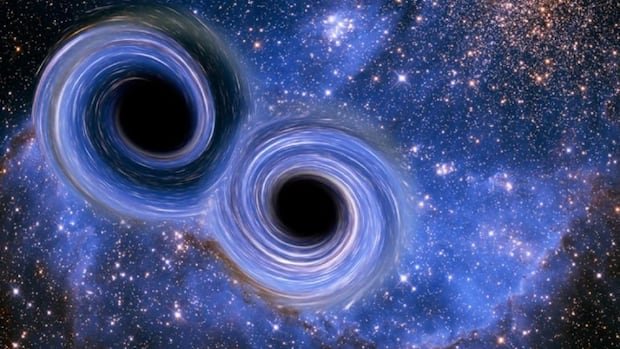A team of Manitoba scientists played a role in a global project that recently unveiled the collision of two massive black holes billions of light years away from Earth. University of Manitoba astrophysicist Samar Safi-Harb, along with her research group, contributed to the LIGO-Virgo-KAGRA initiative, which disclosed the discovery of the largest binary black hole ever detected. The black holes involved were spinning at speeds nearing the theoretical maximum at the time of their merger, a revelation that surprised researchers.
While not directly involved in this specific observation, Safi-Harb’s team is part of the extensive network of scientists worldwide collaborating on the LIGO project. The team includes postdoctoral fellow Nathan Steinle, specializing in gravitational wave astrophysics, and Labani Mallick, focusing on electromagnetic observations of black holes. Safi-Harb’s PhD student, Neil Doerksen, is dedicated to enhancing detector sensitivity for gravitational wave detection through a LIGO fellowship.
The research conducted by the team explores extreme astrophysical phenomena, including extreme temperatures, gravity, and magnetic fields associated with stellar deaths. Stellar explosions contribute to the creation of heavy elements like calcium, gold, and platinum, shedding light on the origins of celestial matter. Black holes, born from the collapse of massive stars, possess intense gravitational forces that challenge traditional observation methods with their invisibility to light-based telescopes.
The LIGO project, inspired by Albert Einstein’s theory of relativity, aims to detect gravitational waves generated by the movement of massive objects in space-time. The recent observation of the GW231123 event, involving the merger of two colossal black holes, marks a significant milestone in gravitational wave research. The resulting black hole from this merger falls within the intermediate mass range, intriguing scientists due to its unexpected formation process.
This discovery suggests that smaller black holes may merge to form larger ones, offering insights into the evolution of cosmic structures. Safi-Harb emphasizes the importance of understanding these origins to unravel the mysteries of the universe. The study of black hole collisions requires specialized tools like those employed by LIGO to capture the gravitational wave signatures predicted by Einstein.
The breakthrough findings from the Manitoba researchers contribute to the broader scientific understanding of the cosmos, highlighting the intricate processes shaping our universe.

